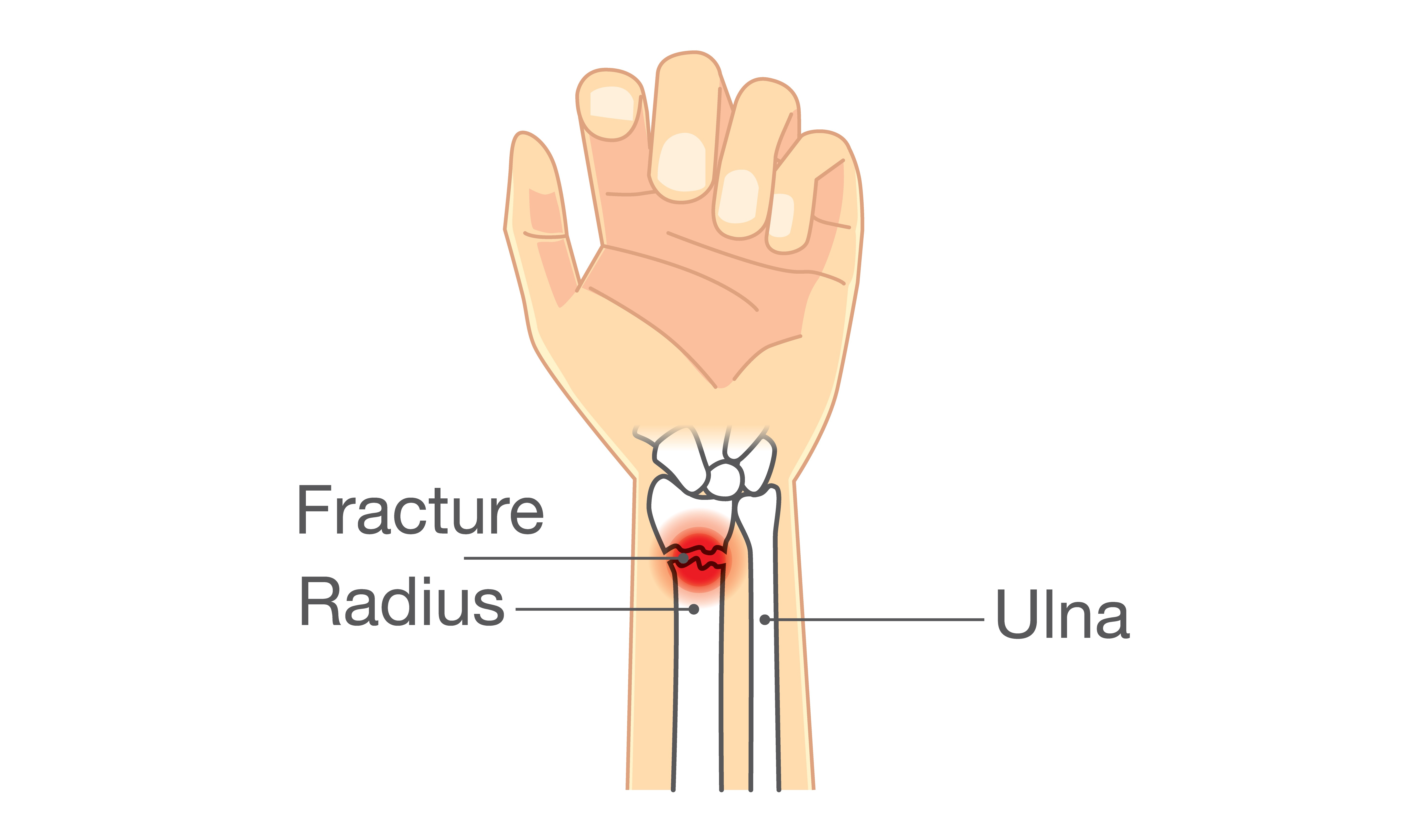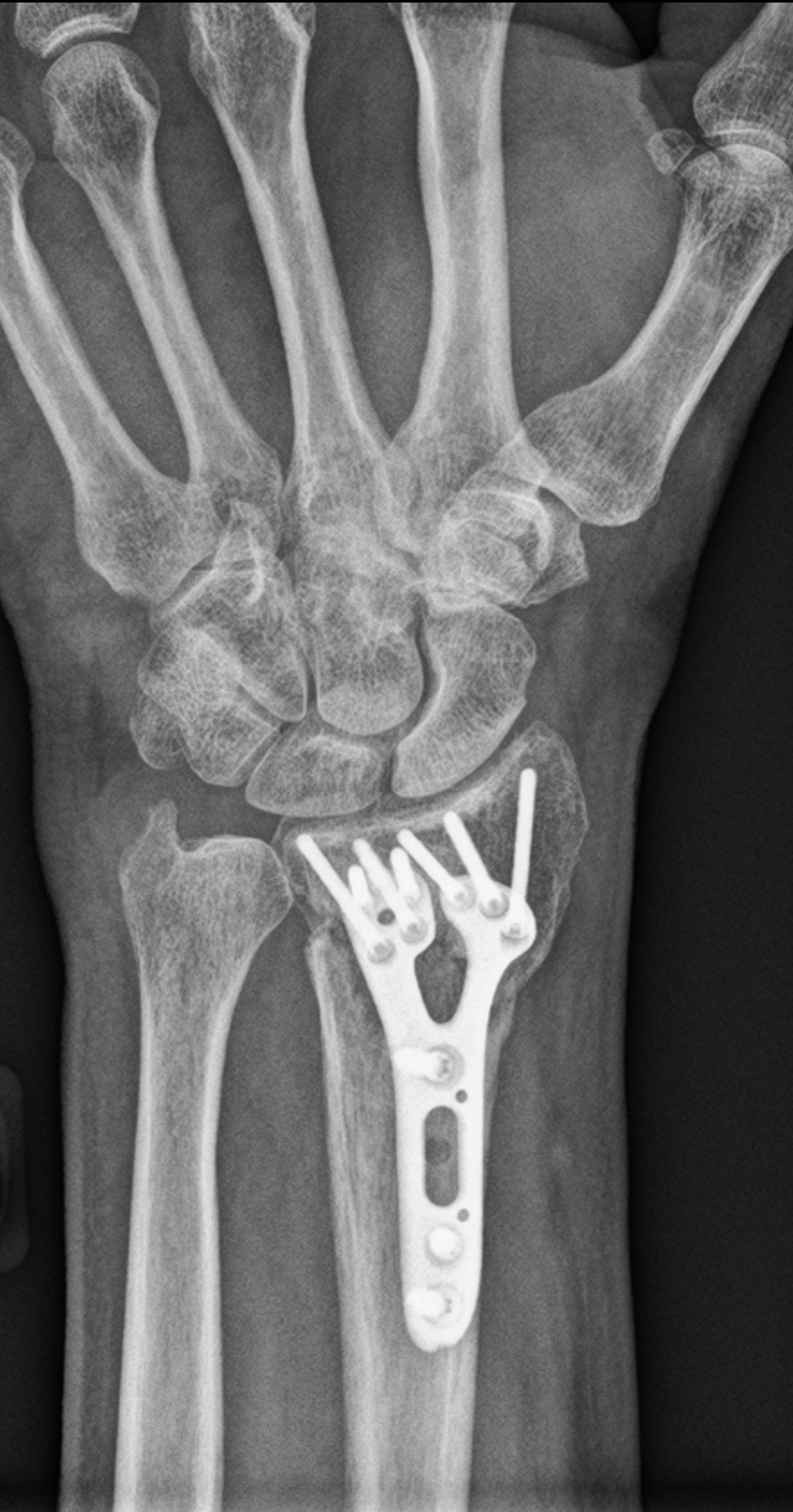A Distal Radius Fracture is a break that occurs at the end of the radius bone of the forearm, near the wrist. It is sometimes associated with a small fracture or break of the ulna, the other bone of the forearm as well.

Distal Radius Fractures are very common, and are typically the result of a fall on an outstretched hand. They generally present as displaced or nondisplaced breaks of the edge of the radius bone near the wrist. When the bone breaks the pieces can either tilt back, tilt forward or be crunched down. Distal radius fractures require more urgent and immediate medical evaluation if there is an open injury, and the bone protrudes through the skin.
What Is a Buckle Fracture of the Distal Radius?
Buckle Fractures of the Distal Radius are a common injury in children. They are essentially bends in the bone, that cause the injured portion to “buckle” on itself rather than fully break.
Buckle Fractures uniquely occur in children because the bones of children are more elastic, and can bend with force before breaking. This is different from adult bone which is more rigid, and therefore breaks with force rather than bending.
What Is a Comminuted Distal Radius Fracture?
A Comminuted Distal Radius Fracture is a break in the Distal Radius that results in multiple small pieces of fragmented bone, as opposed to a non-comminuted fracture which results in one or two large pieces of broken bone.
A Comminuted Distal Radius Fracture is a more severe injury that can lead to wrist instability, and generally does not respond as well to non-operative treatment measures. With comminuted distal radius fractures, bony collapse or a stepoff in the wrist joint may also increase the risk of arthritis, wrist stiffness and compromised function.
How Common Are Distal Radius Fractures?
Distal Radius Fractures are very common. According to the American Academy of Orthopedic Surgeons, Distal Radius Fractures are the most commonly encountered fractures in trauma patients. They account for 18% of all fractures, with an incidence of 160 to 320 per 100,000 patients annually.
Do All Distal Radius Fractures Require Surgery?
No, not all Distal Radius Fractures require surgery. There are certain Distal Radius Fracture patterns that are either non-displaced or minimally displaced within certain parameters, and can be treated with immobilization in the form of casting for at least four to six weeks.
There are also some Distal Radius Fractures, both in adults and children, that could be treated with a closed reduction – meaning the bone is manipulated back into place, then casted with no skin incision and no internal or external hardware.

How Is a Distal Radius Fracture Treated Surgically?
Surgery for a Distal Radius Fracture involves fixation of the bone with a plate, screws or pins depending on the fracture pattern.
The surgery is completed through an open approach, which involves an incision through skin.
Important muscles, nerves, and arteries are protected and the bone is exposed to visualize and clean out the fracture, manipulate and reduce the pieces back into place, and then most commonly apply a plate and screws in order to hold the pieces in place while they heal.
How Long Does a Distal Radius Fracture Take to Heal?
If a Distal Radius fracture is treated surgically with internal fixation (i.e. with a plate and screws on the inside of the forearm/wrist), the wrist is initially immobilized in a cast for 10-14 days postop. The patient is then evaluated, x-rays obtained, sutures removed, with a transition to a removable brace for comfort. At that point the patient may begin range of motion of the wrist and fingers, and use the injured hand for activities of daily living. The patient and their surgeon would then jointly decide if therapy is needed to regain motion or strength.
The bone would generally begin to heal at the six-week mark after fixation, and would generally solidify at the three-month mark.
If a Distal radius fracture is treated without surgery and with casting instead, the cast is generally removed at six weeks once the bone begins to heal. Therapy is typically recommended after cast removal, as stiffness is very common after a long period of wrist immobilization.
Most patients report a return to activities of daily living with minimal limitations at the six-month mark after surgery. However, it may take up to a year after injury or surgery, to determine what the patient’s new baseline function will be, as there could still be gradual improvement in motion and function for a full year after surgery.

